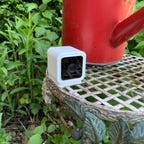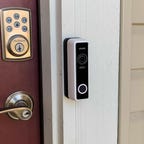[ad_1]
What is the best home security system?
If you have the money to spend, a professional home security system is the best route. Due to its affordable service, no-contract options and compatibility with dozens of third-party smart home gadgets from smart locks to smart thermostats, our top-rated, professionally installed home security system is currently Comcast Xfinity Home. For those looking to spend less and are happy to set it up themselves, DIY is the clear choice. Our top-rated pick for DIY home security system is Ring Alarm Pro, not only due to its reliable security performance but all of the bells and whistles that most other DIY systems don’t have, including backup Wi-Fi in case of power outages, Alexa Guard Plus integration and the option for local storage and processing.
Whether you go the DIY home security route or opt for a professionally installed setup, choosing the right security system for your home is a big decision. Once you start your research, you’ll realize there’s no shortage of options ranging from highly customizable DIY systems available from brands like Ring, SimpliSafe and Wyze to low-hassle, professional monitoring services from ADT, Vivint and others.
More competition in the home security market brings new advances, features and compatibilities with internet-connected gadgets like indoor and outdoor cameras, video doorbells and smart locks. It also brings new vulnerabilities, including an increased risk of hacking. It’s a lot to take in, and today’s home security providers don’t always make it easy to comparison-shop.
That’s where we come in. We’ve put security systems to the test, from top-of-the-line monitored systems with professional installation to wallet-friendly DIY home security system alternatives, including a home security camera (or cameras) and smart home devices monitored via a smartphone app. We’ll be updating this article as we go based on hands-on experience so you can be sure you’re investing in top home security systems.
Best home security systems of 2023
Installation Professional installationContract Required NoVoice Assistant Amazon Alexa, Google AssistantAdditional Fees 24/7 professional monitoring feeService Bundles Internet, phone, cable
Comcast Xfinity Home is a terrific, accessible and affordable service, which is why we gave it an 8 out of 10 in our review. It could cost you thousands less than comparable setups from direct competitors like Vivint and ADT, works with plenty of third-party smart home gadgets and doesn’t require a contract. If you can get around Comcast’s pressure to bundle with their other services (you don’t have to do it!) and the service’s limited home automation capabilities, this home security system will treat you well.
Installation DIY installationContract Required NoVoice Assistant Amazon Alexa, Google AssistantAdditional Fees 24/7 professional monitoring fee, recording feesService Bundles N/A
Ring’s Alarm Pro system has changed the DIY home security game, wrapping a Wi-Fi 6 Eero router into its base device. Not only do you get reliable security performance, but you’ll also get access to all sorts of extra features. These include cellular-powered backup Wi-Fi, network security monitoring, local processing and storage for your Ring devices and integration with Alexa’s Guard Plus service (provided you have an Echo speaker or display). Considering all the bells and whistles, the Ring Alarm Pro received an impressive score of 9/10 in our review.
Like SimpliSafe, Wyze allows you to build a custom security system for your home needs. A home monitoring subscription starts at either $10 a month or $100 annually, including the required Wyze Sense Hub for free. From there, you can add motion sensors, cameras, keypads, video doorbells and more. Or you could opt for the Home Security bundle at Amazon, which includes a v3 camera, two door/window sensors, a motion detector, a keypad and the Sense Hub, and a six-month monitoring subscription for less than $150. The only real drawback: Wyze doesn’t have a cellular backup in case of power or internet outages. Perhaps that feature will come with time, but for now, we give the Wyze Home Monitoring system a solid 8.4 out of 10.
Installation DIY installationContract Required NoVoice Assistant Amazon Alexa, Google AssistantAdditional Fees 24/7 professional monitoring fee, storage feeService Bundles N/A
We’ve tested the SimpliSafe system several times and most recently gave it a review score of 8.5 out of 10. If you’re looking for home security — without all the extra Wi-Fi and smart home integrations of the Ring Alarm Pro — SimpliSafe’s easy-to-install, easy-to-use DIY system is a great option. It offers a comprehensive set of features, including equipment like security cameras and a very good mix of battery-powered motion detection sensors, all of which performed reliably well in our tests. Starter kits begin at less than $250, or you can build a custom alarm system with the exact mix of devices you need. The security company’s professional monitoring plan starts at $18 a month, but you’ll almost certainly want to spring for the $28-a-month monitoring service plan, which adds in things like mobile app controls and smart home security system voice support via Alexa and Google Assistant.
Installation Professional installationContract Required NoVoice Assistant Amazon Alexa, Google AssistantAdditional Fees 24/7 professional monitoring fee, storage feeService Bundles Smart home bundles available
Vivint is a lot more expensive than Comcast Xfinity — and received a lower review score of 7.7 in part due to the high upfront costs — but if money is less of a concern than smart home integration, it’s worth considering. Vivint gives you a super-polished experience with nice third-party device integrations — and it doesn’t require a contract. With monthly monitoring ranging from $30 to $45 a month, it’s comparable month-to-month with Xfinity.
Other home security systems we’ve tested
Besides the systems above, we’ve tested many of the top competitors, including Abode, Abode Iota, Frontpoint, Kangaroo, Ring Alarm, Cove and ADT. Abode and Abode’s all-in-one security camera Iota were both solid contenders that couldn’t quite match SimpliSafe’s price, but they’re worth checking out if you’re interested in DIY smart home systems for small spaces or systems that don’t require monitoring subscriptions. Ring Alarm is another solid DIY option, but the company’s problems with police partnerships tip us away from recommending it — especially when a company like Wyze offers such a strong, budget-friendly alternative.
DIY systems Frontpoint, Cove and Kangaroo all had features to recommend them. Frontpoint’s system is reliable and its hardware is reasonably priced, but its $45 monthly monitoring fee is too expensive. Kangaroo, by contrast, is incredibly wallet-friendly but its doorbell camera is terrible, so Wyze keeps its edge in the budget category too. Cove Home Security, despite reasonable hardware prices, fell to an overly restrictive subscription model that doesn’t allow for self-monitoring or app access without significant monthly fees.
ADT, one of the biggest brands we’ve tested, was broadly disappointing. It’s too expensive, requires a contract and the app is clunky. We’ve tested AT&T Digital Life, too, though we’ve removed the system from consideration since the company stopped installing it for new customers.
We have yet to test Brinks Home, though we hope to include it in our considerations in the coming months.
How we test home security systems
Hands-on testing is core to our evaluations of any home security products. In short, when it comes to the best home security systems, we pay special attention to the user experience, the promised features, reliability and overall value — along with a few other elements. We do the testing in a real home environment over the course of at least a full week. If you want to read more about our review process, check out our in-depth article on how we test home security systems and services.
Home security systems compared
| Comcast Xfinity | Ring Alarm Pro | SimpliSafe (8-piece set) | Vivint Smart Home | Wyze Home Monitoring | |
|---|---|---|---|---|---|
| System price | $360 | $300 | $240 | $500 | $100 |
| Monthly monitoring price | $30 | $20 | $18-$28 | $30-$45 | $10 |
| Starter equipment | Touchscreen controller, three door-window sensors, pet-friendly motion sensor, battery and cellular system backup, Xfinity Home Security yard sign | Eero Wi-Fi 6 mesh router, door-window sensors, motion detectors, a keypad, a siren and optional professional monitoring subscriptions | Base station, keypad, motion sensor, four entry sensors, one panic button | Hub, two door window sensors, a motion detector, a flood sensor | v3 camera, two door/window sensors, a motion detector, a keypad and the Sense Hub |
| Contract required? | No | No | No | No | No |
| Setup | Professional installation | DIY installation | DIY installation | Professional installation | DIY installation |
| Extra features | Integration with a large and growing list of third-party devices, flexible pricing | Cellular-powered backup Wi-Fi, network security monitoring, local processing, storage for all of your Ring devices and integration with Alexa’s Guard Plus service | Customizable system, built-in Wi-Fi and cellular, integration with Amazon Alexa and Google Assistant | Customizable system, integration with many third-party devices, integration with Amazon Alexa, Google Home and Z-Wave devices | Customizable system, integration with many third-party devices, integration with Amazon Alexa and Google Assistant |
| Review score | 8 | 9 | 8.5 | 7.7 | 8.4 |
What to consider when choosing a home security system
When choosing a home security system for your home, you may be tempted to start with deciding between a DIY setup or one that is professionally installed and monitored. However, when you consider the equipment, installation, monitoring options and other features you want, you’ll probably reach a DIY-versus-pro system decision along the way. Here’s some more parameters to consider when shopping around for home security systems:
Equipment and installation
Do you just need to keep watch over your entryways? A good video doorbell for your front door and an outdoor camera covering the back may be all you need — easy to install and monitor yourself. However, if you want to keep closer tabs on your home inside and out with 24/7 monitoring and quick access to emergency response services, you’ll want a more robust system. DIY and professional brands offer home security bundles with most, if not all, of the equipment you’d need to get started and the ability to add single devices as needed.
SimpliSafe home security systems can be easily tailored to your needs. Just simply add or subtract hardware and equipment as you please.
Most home security devices are compatible with Alexa and Google Home smart hubs, but if you prefer Apple HomeKit or another smart home ecosystem, you may have to do a bit more shopping and comparing to find a system compatible with your existing smart home devices. Don’t fret over compatibility too much, however, as Matter will make it easier to connect previously noncompatible devices.
Keep in mind all that equipment will need to be installed. While there isn’t much to installing a security camera or even a wired video doorbell, whole-home systems can be a bit more demanding to install and set up. If you’d rather leave that to an expert, and have them walk you through how to use the system, a professional home security service may be the way to go.
Monitoring, alerts and emergency features
Arlo’s app is simple and intuitive to use.
Virtually all home security systems allow for self-monitoring, likely via an app on your phone. They’ll also send you push notifications when there’s an event, such as when a package is delivered to your doorstep.
Consider whether you want to be in charge of all the monitoring or if you’d like some support. A professional system will come with 24/7 monitoring, but you may be able to add professional monitoring to your DIY system for a fee, depending on the brand you choose.
More advanced features, such as facial recognition, broken glass detection and communication with emergency services may not be available from all manufacturers and devices. Consider the level of monitoring you want, and who you want to do it, along with the emergency response options, when choosing a home security system.
Costs, upfront and ongoing
I listed “cost” last here for a reason. A complete home security system will likely cost you at least a couple of hundred bucks, so be prepared for that. There’s the potential to spend lots more on equipment, of course, or a lot less — maybe a $35 security camera will satisfy your security needs.
Still, the upfront cost of a home security system is roughly the same from one brand to the next, so don’t let cost be the deciding factor. Find a system that has the equipment, installation options, monitoring and features you want first, then compare pricing.
That said, ongoing costs can carry a bit more weight when choosing the best security system. Expect ongoing monthly fees from a professional service and possibly a contract to lock you into those fees for a year or two. While not ideal, signing a contract may come with free equipment or installation and lower upfront costs.
If you’re comfortable with self-monitoring, DIY systems may not come with any ongoing costs. Monthly subscriptions (without a contract) for cloud storage, enhanced features and possibly even professional monitoring are typically an option with DIY systems, often for lower monthly fees than professional services.
Home security system FAQs
Do I have to sign a contract for home security?
Contracts are sometimes required for professional home monitoring or to qualify for free equipment, so service from home security providers like ADT, Vivint and Xfinity may include one. That said, it’s usually possible to avoid contracts if you pay upfront — and other home security companies like Ring, SimpliSafe and Wyze offer DIY home security solutions that never require one.
What’s the best home security camera system for your home?
Arlo, Nest and Wyze cameras are our top picks for the best home security cameras, but the best one for your home depends on your needs. Be sure to consider price, Wi-Fi connectivity, indoor/outdoor functionality and compatibility with other smart home devices and security services when choosing.
How do I set up a home security system?
Some home security systems come with professional installation, so you can rely on the company to install and set up your system. Others, including many DIY systems, may require self-installation and setup. These systems should come with detailed instructions and are often easy to set up. In most cases, you can simply place or mount the devices where desired, then connect them to your Wi-Fi and other smart home devices (if compatible) via an app.
What’s the difference between a wired and wireless alarm system?
In a home security context, there are two ways to look at “wired” vs. “wireless.” The first is power — home security systems require electricity to operate. In that context, a wired system would be one with devices that plug into power and rely on your home’s electricity. A fair number of current-gen systems use wireless, battery-powered sensors and battery backups for the base stations that will keep the setup running if the power ever goes out. You can think of those systems as “wireless” as far as electricity is concerned.
More home security recommendations
[ad_2]



